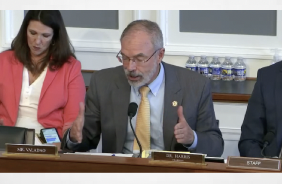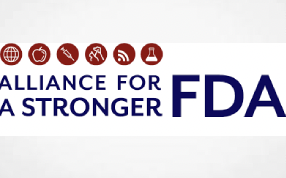The Canadian capital markets landscape
In the 12 months leading to legalization in October 2018, Canadian public companies already in the medical cannabis space experienced “jaw-dropping growth” in their market capitalizations, notwithstanding that many reported negative earnings.1 A significant volume of merger and acquisition (M&A) activity was also observed, often involving surprisingly high valuation multiples based at least in part on what may have been overly optimistic predictions of consumer demand. Initial investor interest was primarily retail, and exceptionally strong notwithstanding the speculative nature of investment in this new and unproven industry.
Unfortunately, investors’ high expectations for the cannabis market in Canada have been dampened over the course of the last year. The levels of sales initially predicted have not been achieved for a variety of reasons, including the small number of retail outlets initially opened in most provinces, the high price of legal cannabis in comparison to black market cannabis, and initial product supply issues, including either insufficient product availability or product quality difficulties. While Statistics Canada reported in September 20182 that estimates developed by it “implied that illegal cannabis sales would account for approximately 24 percent of the total Canadian market,” survey results subsequently published by it one year after legalization indicated that only 28 percent of Canadian cannabis users reported obtaining all of the cannabis that they consumed from a legal source, suggesting that the majority of cannabis sales in Canada continue to originate from illegal sources.3
As a result, more than one year post legalization, many public cannabis companies are still struggling to become profitable, and share prices have plummeted. A recent onslaught of securities class actions against cannabis companies has not helped investor confidence and adversely affected the ability of these companies to access financing through the public markets.
Tsunami of securities class actions
In the wake of legalization, several Canadian listed cannabis companies listed on American exchanges to enhance their access to capital. To what extent the litigation risks of cross listing were carefully considered is unclear. During 2019, approximately nine Canadian cannabis companies were listed on the NYSE and 20 trade on NASDAQ. Many others trade OTC in the US.
Many of these companies now find themselves named as defendants in securities class actions both north and south of the border. Allegations include that misrepresentations were made in public disclosures relating to, among other things, allegedly misleading financial guidance, alleged concealment of the fact that cannabis properties or businesses were either purchased at what is alleged to have been grossly inflated prices from undisclosed related parties, or sold to undisclosed related parties at a materially deficient price, alleged failure to disclose the sale of moldy product, alleged failure to make timely disclosure of softening product demand, and alleged concealment of the fact that cannabis was being produced in unlicensed facilities.
What was said during quarterly analysts’ calls appears to be one point of focus for class counsel targeting cannabis companies. They are increasingly relying upon alleged misstatements during such calls as a basis for liability. Careful scripting and preparation for how to answer difficult questions is extremely important.
It appears that at least some Canadian cannabis issuers may have underestimated the importance of obtaining adequate insurance in respect of securities claims against the company and its officers and directors prior to listing on the NYSE or Nasdaq. Surprisingly, we are aware of one instance in which no insurance to cover securities claims brought in the US was obtained. In another, only a few million dollars was available.
Need for unified defense strategy
The financial cost and complexity of defending these actions increases significantly once a company is called upon to defend itself in more than one jurisdiction. The defense strategy must necessarily take into consideration the differences in the substantive and procedural law in all jurisdictions where the company is sued.
In both Canada and the US, investors can assert statutory causes of action under securities legislation in respect of alleged misrepresentations in certain offering documents4 and in continuous disclosure documents, press releases and oral statements5. Proof of investor reliance is not required under any of the Canadian statutory causes of action or under the US statutes governing securities offerings, and may be presumed on a class-wide basis for US open market securities fraud claims if the stock trades in an efficient market. However, there are several important points of distinction between the legal regimes applicable to these actions that must be factored into any joint defense strategy.
With respect to claims relating to misrepresentations in secondary market disclosures, leave of the court is required under Canadian law. The test for leave is merits based, but all that the plaintiff must demonstrate is that there is a reasonable chance of success at trial. Evidence must be filed by the plaintiff on the motion, which is typically heard at the same time as the motion for certification.
There is no equivalent under US law. However, defendants have the ability to bring a motion to dismiss the action prior to certification or the allowance of fact discovery, on the basis that the allegations are not sufficiently particularized based upon US pleadings standards. If that motion fails, documentary production is made and depositions proceed prior to the certification motion. Fact discovery in US litigation can be quite broad and burdensome. In contrast, in Canada there is no fact discovery until after certification.
One other important distinction relates to damages. Under Canadian law, damages for misrepresentations alleged to have been made in continuous disclosure documents are calculated according to a statutory formula, and any decline in the share price proven to be attributable to a change in the market price unrelated to the alleged misrepresentation or failure to disclose is excluded. Of note, damages caps apply, but can be blown in relation to officers and directors if they are proven to have authorized, permitted or acquiesced in the making of a misrepresentation while knowing it to have been a misrepresentation. Such a finding may also have adverse consequences for insurance coverage.
There are no damages caps under US law. As in Canada, however, defendants are typically not liable under US law for stock price declines that are not attributable to the alleged fraud.
In general, it is desirable to determine where the greater financial exposure lies early in the defense of these cases. That often informs strategic decisions concerning the scheduling of motions in both jurisdictions, whether and what defense evidence should be filed in response to the leave motion in Canada, and overall settlement strategy.
The benefits of retaining a unified cross border defense team experienced in the defense of cross border securities class actions, and familiar with the cannabis industry cannot be underestimated. Ultimately it is more efficient, less costly and produces a much better result for the parties named as defendants.
Footnotes
1. EY Insights: Cannabis Valuations October 2018
2. Latest Developments in the Canadian Economic Accounts: Estimating the Demand for Cannabis (Statistics Canada, September 21, 2018) at p. 6
3. National Cannabis Survey, third quarter 2019 (Statistics Canada, October 30, 2019) at p. 4
4. See Sections 11 and 15 of the Securities Act, 15 U.S.C. in the US, and section 130 of the Ontario Securities Act, R.S.O. 1990, c.S.5 and other provincial legislation in Canada
5. Section 10(b) and Section 20(a) of the Exchange Act, 15 U.S.C. and Rule 10-b-5 in the US, and Part XXIII.1 of the Ontario Securities Act and other provincial legislation in Canada
About Norton Rose Fulbright Canada LLP
Norton Rose Fulbright is a global law firm. We provide the world’s preeminent corporations and financial institutions with a full business law service. We have 3800 lawyers and other legal staff based in more than 50 cities across Europe, the United States, Canada, Latin America, Asia, Australia, Africa, the Middle East and Central Asia.
Recognized for our industry focus, we are strong across all the key industry sectors: financial institutions; energy; infrastructure, mining and commodities; transport; technology and innovation; and life sciences and healthcare.
Wherever we are, we operate in accordance with our global business principles of quality, unity and integrity. We aim to provide the highest possible standard of legal service in each of our offices and to maintain that level of quality at every point of contact.
For more information about Norton Rose Fulbright, see nortonrosefulbright.com/legal-notices.
Law around the world
nortonrosefulbright.com
The content of this article is intended to provide a general guide to the subject matter. Specialist advice should be sought about your specific circumstances.




















